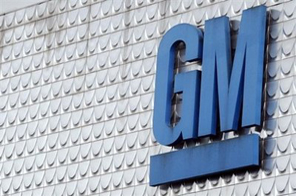GM clears hurdle as bankruptcy plan approved
NEW YORK: General Motors cleared a major hurdle toward a quick exit from bankruptcy as a judge approved a government-backed plan to create a "new GM" that sheds major debts of the ailing Detroit automaker.
The ruling released late Sunday paves the way for a "reinvention" of GM, which filed for bankruptcy protection on June 1 and has vowed to emerge as a leaner, more profitable company once freed from its burdensome debts.
Judge Robert Gerber said he had examined about 850 objections to the restructuring plan raised by GM bondholders and others, but found there were "no realistic alternatives" to the asset sale.
"As nobody can seriously dispute, the only alternative to an immediate sale is liquidation -- a disastrous result for GM's creditors, its employees, the suppliers who depend on GM for their own existence, and the communities in which GM operates," Gerber wrote.
GM hailed the decision as "another step toward the launch of an independent new GM."
GM president and chief executive Fritz Henderson added that now "it's our responsibility to fix this business and place the company on a clear path to success without delay."
The judge said GM could implement the plan as soon as Thursday at 1600 GMT pending any additional delay imposed by an appellate court.
At least one appeal had been filed Monday, from accident victims seeking to hold the new GM accountable for any product liability damages.
Once the world's largest corporation, the new GM will emerge as a significantly smaller automaker with fewer brands and employees, and a diminished global footprint.
GM's plan seeks to follow the script of Chrysler, which spent 42 days in bankruptcy protection before emerging as a new company run by Italy's Fiat.
As with Chrysler, GM's old corporate entity will remain under supervision of the bankruptcy court, but the new GM will not be burdened by the lengthy process.
The US government will own 60.8 percent of the new company after having supported GM's operations with some 50 billion dollars in emergency loans.
Canada, which provided 9.1 billion dollars in loans, will have an 11.7 percent stake and a United Auto Workers union retiree health care trust fund will hold 17.5 percent.
Creditors holding GM bonds will swap 27.1 billion dollars in debt for a 10 percent stake and warrants allowing them to buy an additional 15-percent stake.
President Barack Obama, whose auto task force spearheaded the GM restructuring plan, has said his administration has no intention of nationalizing the automaker over the long term and will not be participating in its day-to-day operations.
A senior member of Obama's automotive task force testified last week that the government could begin to sell its stake as early as 2010, once the new company is ready to launch a public stock offering.
GM was able to move through the process swiftly because it spent months preparing for the bankruptcy process and reaching agreements with its main union and most of its creditors.
US auto sales appear to have stabilized after falling to levels not seen in decades, but analysts warn it will likely be months before they recover from the current depressed rate.
Total US auto sales fell 28 percent in June, the first time sales have fallen by less than 30 percent since the market crashed in October of 2008, according to Autodata.
Sales for the first half of the year were down 35.1 percent at 4.8 million vehicles, according to Autodata.
GM's sales trailed the market, falling 34 percent in June and 41 percent for the first six months of the year.






